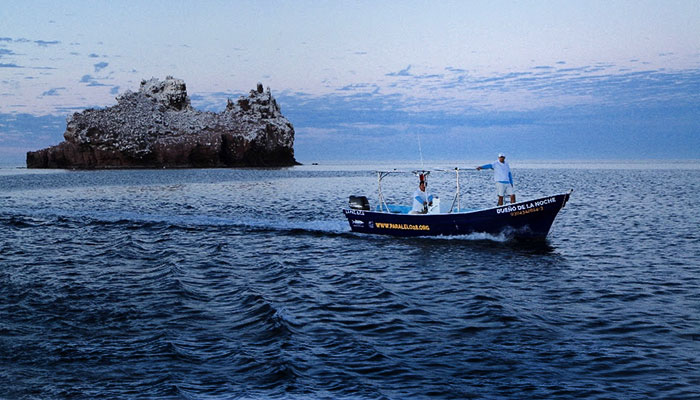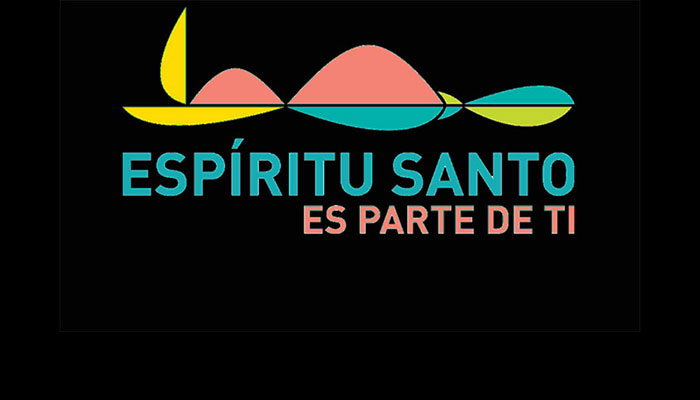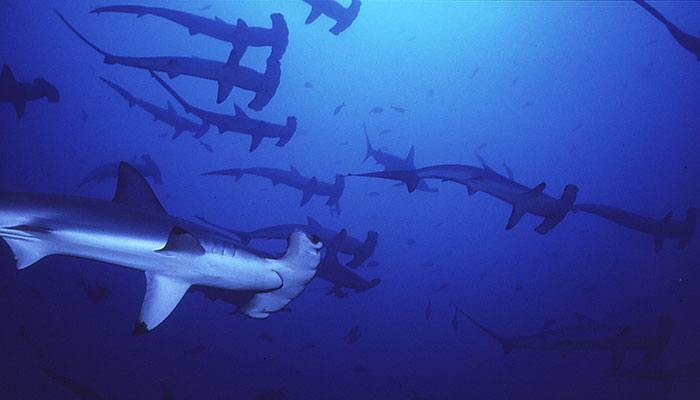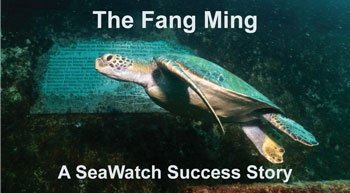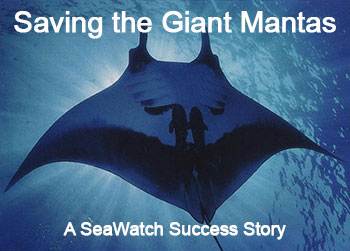
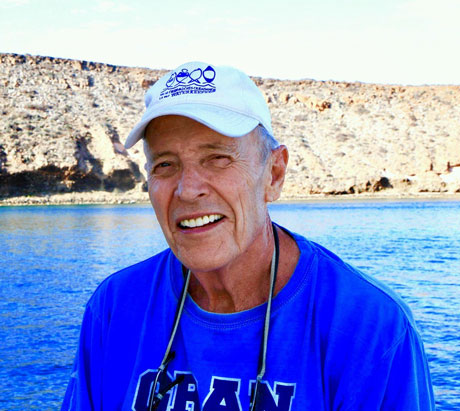
Mike McGettigan, Sea Watch Founder, has been diving, filming & fishing the Sea of
Cortez
year around for over 47 years. He has logged over 350,000 nautical miles in
these
waters
on one sailboat & 3
yachts. His activist history in the Sea of Cortez is here.
SeaWatch was founded in 1993 by group of people concerned with the rapidly declining fish populations in the Sea of Cortez. Since then we have initiated, petitioned and gotten regulations enacted that prohibit the use of compressed air for any fish extraction in all Mexico’s ocean waters.
In 2009, SeaWatch working with local supporters initiated citizen driven vigilance to stop illegal fishing that was taking 20 tons of fish each night and day from the Bay of La Paz. This program, funded primarily by SeaWatch, has grown to become ROC the highly successful group of former illegal fisherman who patrol the local waters of the Sea of Cortez day and night. ROC patrol boats carrying government authorities are stopping the illegal fishing and other illegal activities harmful to the endangered and threatened marine species in the area.
There is only one place in the entire Sea of Cortez that has reversed the declines in fish populations. Twenty years ago the citizens of Cabo Pulmo National Park took matters into their own hands, and with community-wide commitment, stopped the illegal fishing that was killing the reef and reef fish populations by providing 24-hour vigilance. They reversed the decline and the recovery in fish populations was spectacular. Nowhere else has this happened in the Sea of Cortez until now. SeaWatch working with several local organizations has helped create a second major fisheries recovery at Espiritu Santo National Park in La Paz. For details please enjoy the video below.
In 2016 SeaWatch initiated and is funding a very successful campaign to replicate the success of Cabo Pulmo & help the regeneration in the Bay of La Paz and at the Archipelago of Espiritu Santo National Park. “Espíritu Santo es parte de ti” (Espiritu Santo is part of you) is a local, grassroots campaign working through community awareness in La Paz to restore community pride, promote good practices and eliminate illegal fishing in the park.
The Reef Fish Recovery Continues in Espiritu Santo National Park
It is only through your generous donations we are able to fund these and other organizations vital to the regeneration of the Espiritu Santo National Park, The Sea of Cortez and The Bay of La Paz.
We at SeaWatch Thank You!
What's New at SeaWatch
SeaWatch Annual Holiday Raffle
This year's annual holiday raffle in support of our SeaWatch projects featured this beautiful, limited edition bronze sculpture, called Making Waves, donated by Scott Hanson.
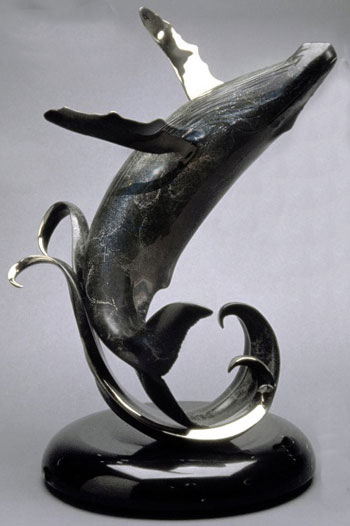
This is one of Scott's most popular sculptures and and sold in major galleries for $7200.00.
SeaWatch Year End Raffle
The lucky winner is Gordon Harris! Scott Hanson donated his popular “Winter Song” sculpture to SeaWatch for our year-end raffle. This beautiful sculpture was raffled in January. We thank you for your support of the raffle and look forward to your support and the success of future raffles. Money raised helped SeaWatch fund the organizations vital to the recovery of the Sea of Cortez. Watch the video of Scott Hanson here...
Espiritu Santo es parte de ti
Featured in Conservation Watch Magazine
Conservation Watch Magazine Is published by the Garden Club of America's conservation committee members. It's a quarterly online newsletter featuring conservation and environmental news. SeaWatch is proud of the campaign we originated and support Espiritu Santo es parte de ti (Espiritu Santo is part of you) and their feature article in this magazine. Read the article...
Gillnetting Protected Mobula Rays
See This Recent Video and Act Today
The Mobula Rays are a joy to watch as these expert acrobats jump, twirl and belly flop through the sea. The Sea of Cortez is the world's premium destination for viewing the largest schools in the world, sometimes exceeding 10,000 individuals. They are seasonal visitors and visit Baja in May-July and November - January. These rays are protected by Mexican Law Read More...
Find SeaWatch On Facebook and You Tube



SeaWatch Year End Raffle
Espiritu Santo es parte de ti
Featured in Conservation Watch Magazine
Gillnetting Protected Mobula Rays
See This Recent Video and Act Today
Find SeaWatch On Facebook and You Tube


How You Can Help Save the Sea of Cortez
Consume Responsibly
Abstain from eating all fish that protect the health of the reefs including parrotfish and surgeon fish
Report Illegal Activities
Be our "Eyes on the Water" take photos, record positions, and send reports to the authorities
Donate
Your donations contribute to the work of Espiritu Santo es parte de ti and the efforts of ROC

